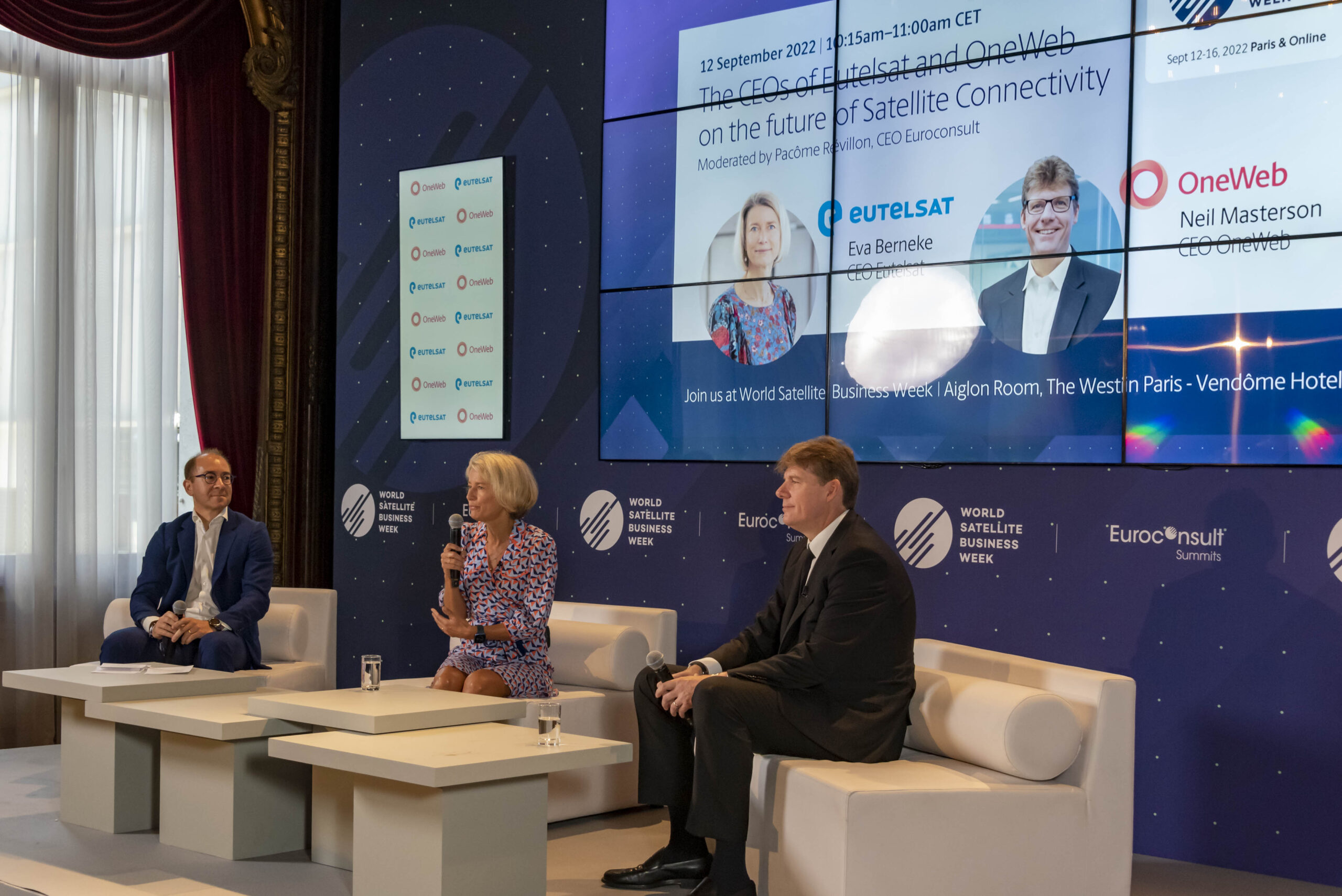PARIS, France — OneWeb is considering plans for a second-generation constellation jointly with Eutelsat ahead of closing their proposed merger, executives for the satellite operators said Sept. 12.
The companies “do not need to wait” for the six to nine months it could take for their merger to clear shareholder and regulatory approvals, OneWeb CEO Neil Masterson said during World Satellite Business Week here.
If OneWeb can leverage Eutelsat’s fleet in geostationary orbit (GEO), Eutelsat CEO Eva Berneke said the low Earth orbit (LEO) broadband startup “might not need quite as many new satellites in order to address peak capacity.”
The British LEO startup has deployed about two-thirds of the 648 LEO satellites in its current generation constellation. It has launch agreements with SpaceX and India’s space agency to complete the network by the end of spring.
Before the operators announced plans July 26 to merge their businesses, OneWeb’s Gen 2 was expected to feature far more satellites than the current generation to improve its connectivity services.
Berneke also said the operators might look to jointly develop a ground network for the upgraded constellation to carve out hybrid network synergies.
The companies plan to provide more details about the cost of Gen 2 in mid-October.
Berneke said she expects the companies will be able to issue a request for quote (RFQ) for Gen 2 in about six months, and then finalize the design of the constellation six months after that.
The merged company plans to pursue business-to-business and business-to-consumer connectivity markets they expect to grow to by three and five times, respectively, over the next decade to a combined $16 billion.
The “demand is not a problem here,” Masterson said, “fulfillment is the problem.”
According to Masterson, combining OneWeb and Eutelsat’s technologies will unlock more use cases to capture this expanding connectivity market.
While Eutelsat’s GEO satellites can deliver more capacity to congested areas, OneWeb’s LEO network offers reduced latency and pole-to-pole coverage.
One of the growth avenues the companies are exploring is using OneWeb Gen 2 to support Europe’s plans for a sovereign satellite network constellation.
Although the U.K. will continue to hold a “golden share” in the LEO operator following its merger with France-based Eutelsat, which grants the British government special voting rights, Masterson said the combined group could implement measures that would safeguard European sovereignty.
He said OneWeb and Eutelsat already have similar firewalls in their organizations for serving government customers.
“It’s absolutely normal,” he added, “it’s done day in, day out by all the major satellite operators.
“And so there’s no reason why that model can’t be transferred to Europe or any other country.”
OneWeb has also reserved options for 90% of the launch capacity it will require for Gen 2, Masterson said without elaborating.
In June, OneWeb announced it will launch some of its Gen 2 satellites on a launch vehicle being developed by Relativity Space as soon as 2025.
Speaking to SpaceNews on the conference’s sidelines, Berneke said the companies plan to pool their launch reservations together, including slots Eutelsat has booked on new launch vehicles from Arianespace and Blue Origin.
She said Eutelsat has been “building an inventory of access to space,” and has four or five launches in reserve over the next five to six years.
OneWeb also has about 60 replacement satellites for its current generation, she added, which means it could hold off from launching Gen 2 until 2026.
“They can prolong the life a little bit, but we do want to have the Gen 2 up there because that will have new functionality, more capacity [and will be] cheaper, so we’re not going to prolong Gen 1 forever,” she said.
